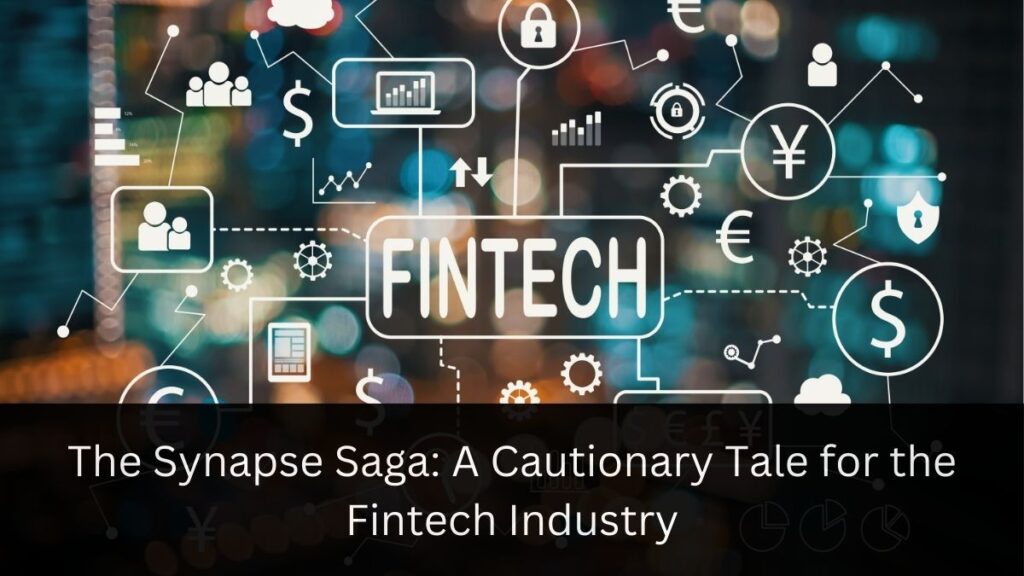In the fast-paced world of financial technology, the collapse of a single company can send shockwaves through the entire ecosystem. Such is the case with Synapse, a once-promising Banking-as-a-Service (BaaS) startup whose downfall has left a trail of frozen funds and frustrated customers in its wake. This article delves into the rise and fall of Synapse, exploring the far-reaching consequences of its bankruptcy and the lessons it holds for the fintech industry at large.
The Rise of Synapse: A Fintech Darling
Synapse burst onto the scene with a bold vision: to revolutionize the way companies embed banking services into their products. Founded in San Francisco, the startup quickly caught the eye of venture capitalists, raising over $50 million in funding. Its 2019 Series B round, led by Andreessen Horowitz’s Angela Strange, seemed to cement its status as a rising star in the fintech firmament.
The company’s appeal was clear. In an era where financial services were becoming increasingly digitized and decentralized, Synapse offered a tantalizing proposition. It allowed businesses to integrate banking features seamlessly into their offerings, opening up new possibilities for innovation in areas like payroll, credit cards, and specialized financial products.
The Cracks Begin to Show
However, as is often the case in the world of startups, the reality failed to live up to the hype. The first signs of trouble emerged in 2023 when Synapse began laying off staff. In October of that year, the company cut 40% of its workforce, citing macroeconomic pressures that were impacting its clients and anticipated growth.
These layoffs were more than just a cost-cutting measure; they were a harbinger of the turmoil to come. As tensions arose with banking partners like Evolve Bank & Trust, the foundations of Synapse’s business model began to crumble.
The Domino Effect: Synapse’s Collapse and Its Aftermath
Chapter 11 and the Failed Rescue Attempt
In April 2024, Synapse filed for Chapter 11 bankruptcy, hoping to sell its assets to TabaPay for $9.7 million in a last-ditch effort to salvage the company. This glimmer of hope was short-lived, however, as TabaPay walked away from the deal just weeks later.
The fallout was immediate and severe. With no buyer in sight, Synapse was forced to convert its bankruptcy to Chapter 7 liquidation. This sudden shift left countless fintech companies and their customers in limbo, unable to access funds held through Synapse’s services.
The Ripple Effect on the Fintech Ecosystem
The collapse of Synapse wasn’t just a story of one company’s failure; it was a stark illustration of the interconnectedness of the fintech world. Companies like Juno, Yotta, and Yieldstreet, which had relied on Synapse’s infrastructure, found themselves scrambling to reassure customers and find alternative solutions.
Perhaps the most poignant example of the collateral damage was Copper, a teen banking startup. In May, Copper had to abruptly discontinue its banking operations, leaving families without access to the funds they had entrusted to the platform.
The Numbers Don’t Lie: A Financial Fiasco
The scale of the Synapse debacle is staggering. As of July 2024, nearly $160 million in customer funds remained frozen, with estimates suggesting that between $65 million and $95 million might be missing entirely. These aren’t just numbers on a balance sheet; they represent real people’s savings, paychecks, and financial security.
To put this in perspective, imagine the entire population of a small city suddenly finding their bank accounts inaccessible. The anxiety, frustration, and financial hardship caused by this situation are incalculable.
The Aftermath: Senators Step In
The severity of the situation has not gone unnoticed by lawmakers. In July, a group of senators called on Synapse’s owners, bank and fintech partners, and even its venture capital backers to “immediately restore customers’ access to their money.” This unprecedented move underscores the gravity of the situation and the potential for regulatory scrutiny in the fintech sector.
Lessons Learned: The Future of Banking-as-a-Service
The Synapse saga serves as a stark warning to the fintech industry. It highlights the potential pitfalls of the BaaS model and raises important questions about the stability and security of digital banking solutions.
1. Due Diligence is Paramount
For companies considering partnering with BaaS providers, the Synapse collapse emphasizes the importance of thorough due diligence. It’s not enough to be dazzled by innovative technology; the financial stability and risk management practices of potential partners must be scrutinized with a fine-toothed comb.
2. Diversification is Key
Relying too heavily on a single service provider can be a recipe for disaster. Fintech companies would do well to diversify their partnerships and have contingency plans in place for worst-case scenarios.
3. Transparency and Communication are Crucial
In times of crisis, clear and honest communication can make all the difference. Companies that were upfront with their customers about the Synapse situation fared better in terms of maintaining trust and goodwill.
4. Regulatory Oversight May Increase
The Synapse debacle may lead to increased regulatory scrutiny of the BaaS model and fintech partnerships in general. Companies in this space should be prepared for potential changes in the regulatory landscape.
The collapse of Synapse is more than just a cautionary tale; it’s a wake-up call for the entire fintech industry. As we move forward, it’s crucial that companies, investors, and regulators work together to create a more stable and secure financial ecosystem.
For consumers, the Synapse saga serves as a reminder to approach new financial technologies with a healthy dose of skepticism. While innovation in the financial sector can bring tremendous benefits, it’s essential to understand the risks involved and to diversify one’s financial holdings.
As the dust settles on this financial fiasco, one thing is clear: the fintech industry must learn from Synapse’s mistakes if it hopes to maintain the trust of consumers and continue its trajectory of growth and innovation. The future of digital banking depends on it.

